Galleries
How PPOW Gallery, an Activist Art Gallery With a Nonprofit Soul, Has Managed to Thrive—and Now Expand—in New York’s Unforgiving Market
The gallery is nearly doubling its footprint with a new space next to its Tribeca home.
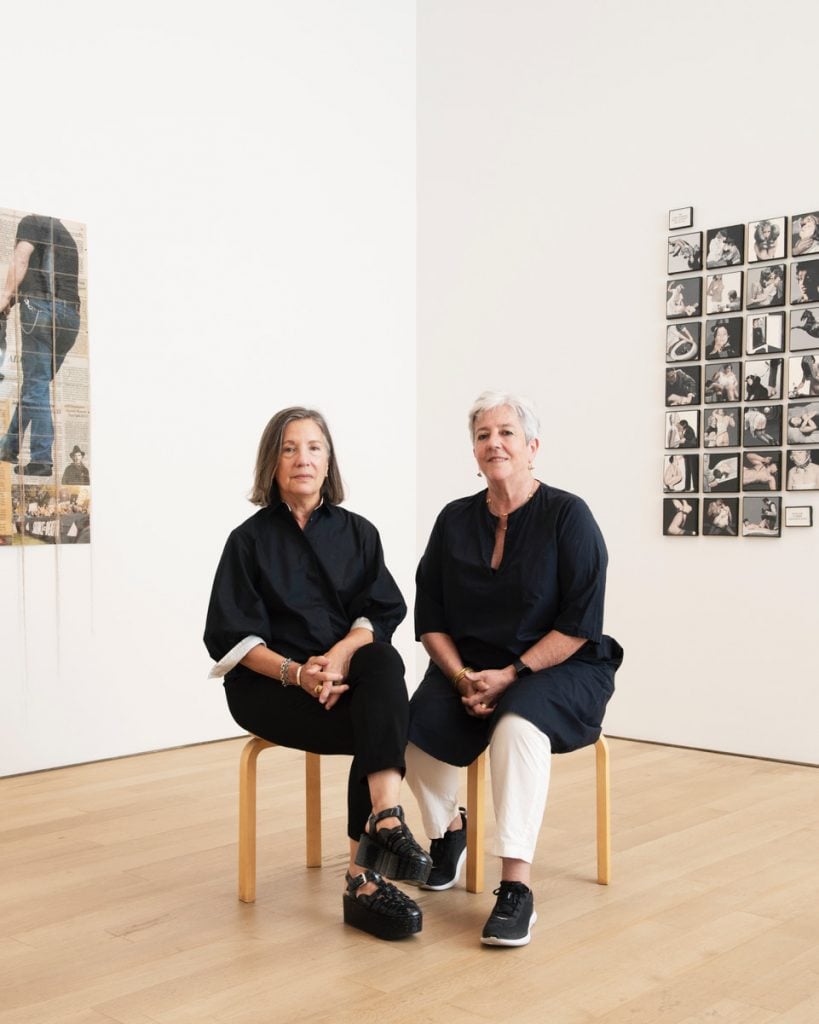
The gallery is nearly doubling its footprint with a new space next to its Tribeca home.

Claire Voon

When PPOW opened in 1983, in a narrow East Village storefront, visitors often assumed the gallery was an alternative space. On the contrary: Co-founders Wendy Olsoff and Penny Pilkington were young, ambitious dealers at the forefront of a nascent downtown art scene, intent on breaking into the business their way. In an early sign of success, their debut show of sociopolitical graphite drawings by Sue Coe sold out.
“It was really rude—people asking all the time, ‘Are you a not-for-profit space?’ Because we’re showing political art,” Olsoff said. “I couldn’t figure out why the heck people were asking this, and I recently realized it’s because we were showing underrepresented communities. And we were two women. I think we’ve suffered for that, since people didn’t take us seriously.”
The gallery has come a long way since, enduring while several of its peers, from Bellwether Gallery to Metro Pictures, have called it quits. Now in the hotspot of Tribeca, where it moved in 2020 from Chelsea, it is not only surviving but thriving. In September, it will nearly double its footprint with a new gallery next to its current space, on the second floor at 390 Broadway.
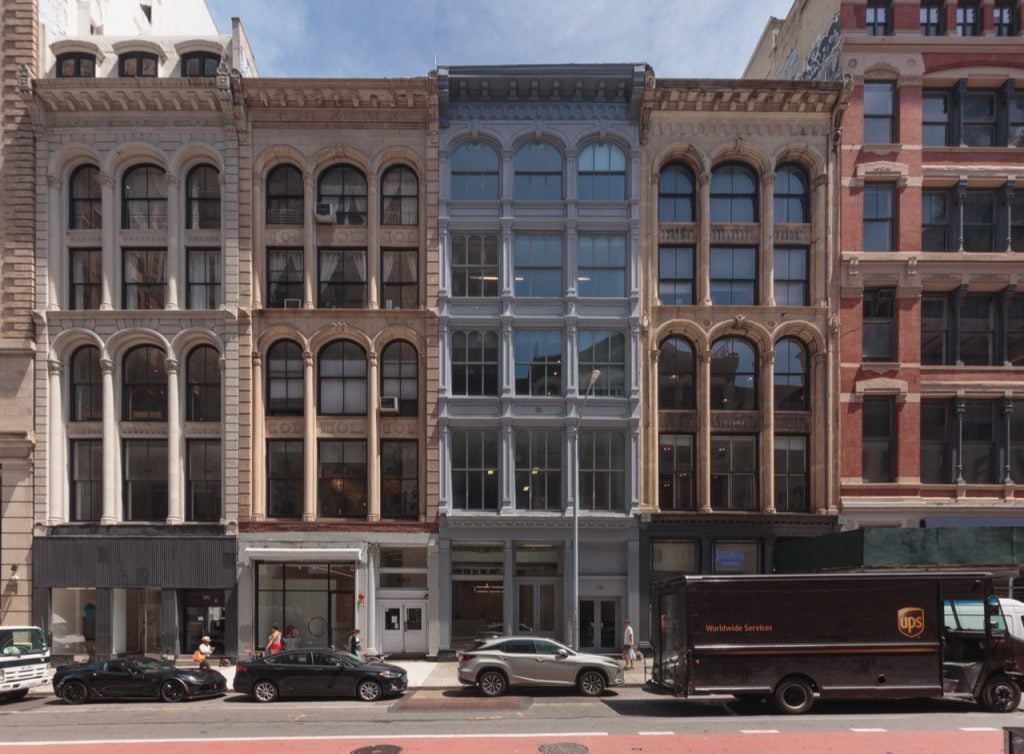
PPOW’s home at 390 Broadway (gray building at center) will soon get bigger.
Still, nearly 40 years on and through several relocations, PPOW’s mission—to show art that not only moves but takes a stance—has not changed. It represents the estates of pioneering activist artists including Carolee Schneemann, David Wojnarowicz, and Martin Wong, and has a multigenerational roster with an eclectic mix of names like Betty Tompkins, Guadalupe Maravilla, and Gerald Lovell. While other galleries have recently had to make concerted efforts to diversify their exhibitions—whether to simply do better or to appeal in a market that has more appropriately valued historically underrepresented artists—PPOW has long been ahead of this push.
“Our program didn’t have to change to adapt to the times, it just makes sense,” Osloff said. “How many galleries have changed their program completely? We’ve always shown figurative painting, we’ve always shown diversity. It’s in our DNA.”
Astrid Terrazas, the fast-rising artist whose Surrealistic paintings and ceramics remix symbol-laden traditions such as Mexican folklore and astrology, will inaugurate the new gallery with her first solo show. “It was the gallery’s politics that first drew me in,” she said, adding that it represents many artists she admires, including Wong and Aaron Gilbert.
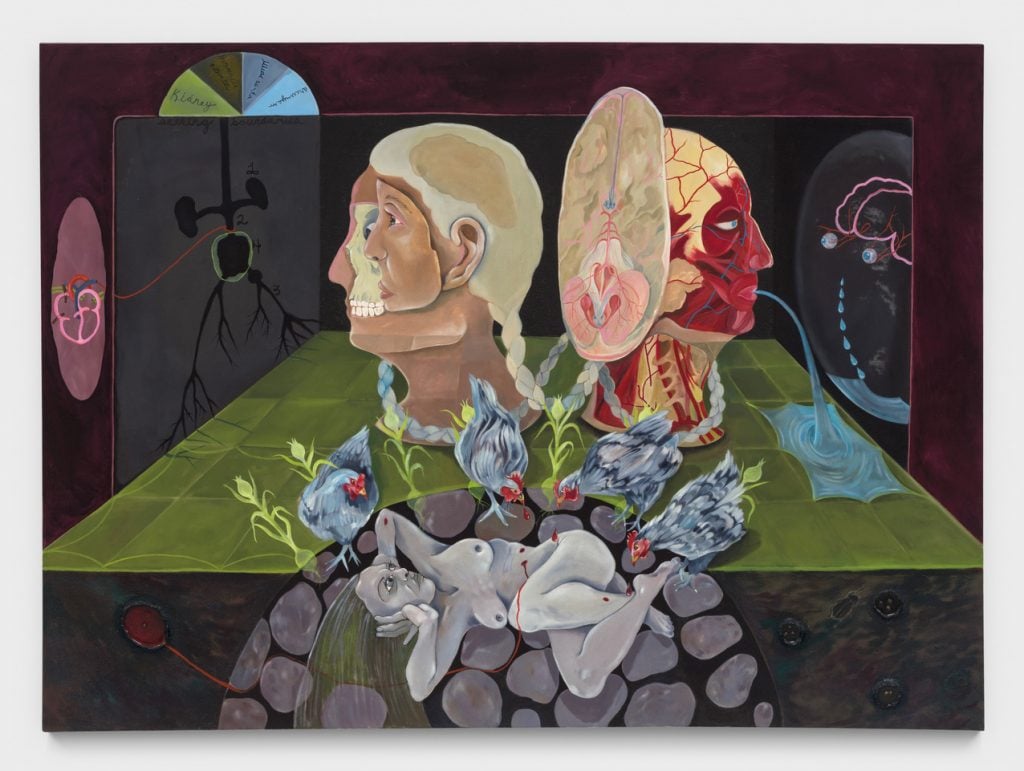
Astrid Terrazas, The Hens have come home to Roost (2022), oil on canvas. Courtesy of Astrid Terrazas and PPOW, New York.
“With every show, their artists criticized the failings of the United States–racism, homophobia, imperialism, capitalism and sexism; each one left me with an intense desire to make art, and more importantly to fight harder for my neighborhood,” Terrazas said. “Wendy and Penny don’t care about passing trends. They genuinely support their artists’ visions.”
As 25-year-olds launching their own business, Olsoff and Pilkington had solid grounding. Both were trained by “old-school, very demanding dealers,” Olsoff described—her at CDS Gallery with Clara Sujo, and Pilkington at Leslie Waddington’s gallery in London. They met at Theo Waddington Gallery on the Upper East Side in 1981 and became roommates. Two years later, PPOW was born on East Tenth Street; it subsequently relocated to Eighth Street.
Changes in the neighborhood led them to SoHo in 1988—the year the Tompkins Square Park riot occurred, shutting down streets for months. “Had we stayed, we would never have survived,” Pilkington told Triple Canopy in 2012. Those downtown years at 532 Broadway were momentous: PPOW promoted work by Wojnarowicz, Wong, Nancy Spero and Carrie Mae Weems, whose Kitchen Table Series debuted at the gallery in 1990.
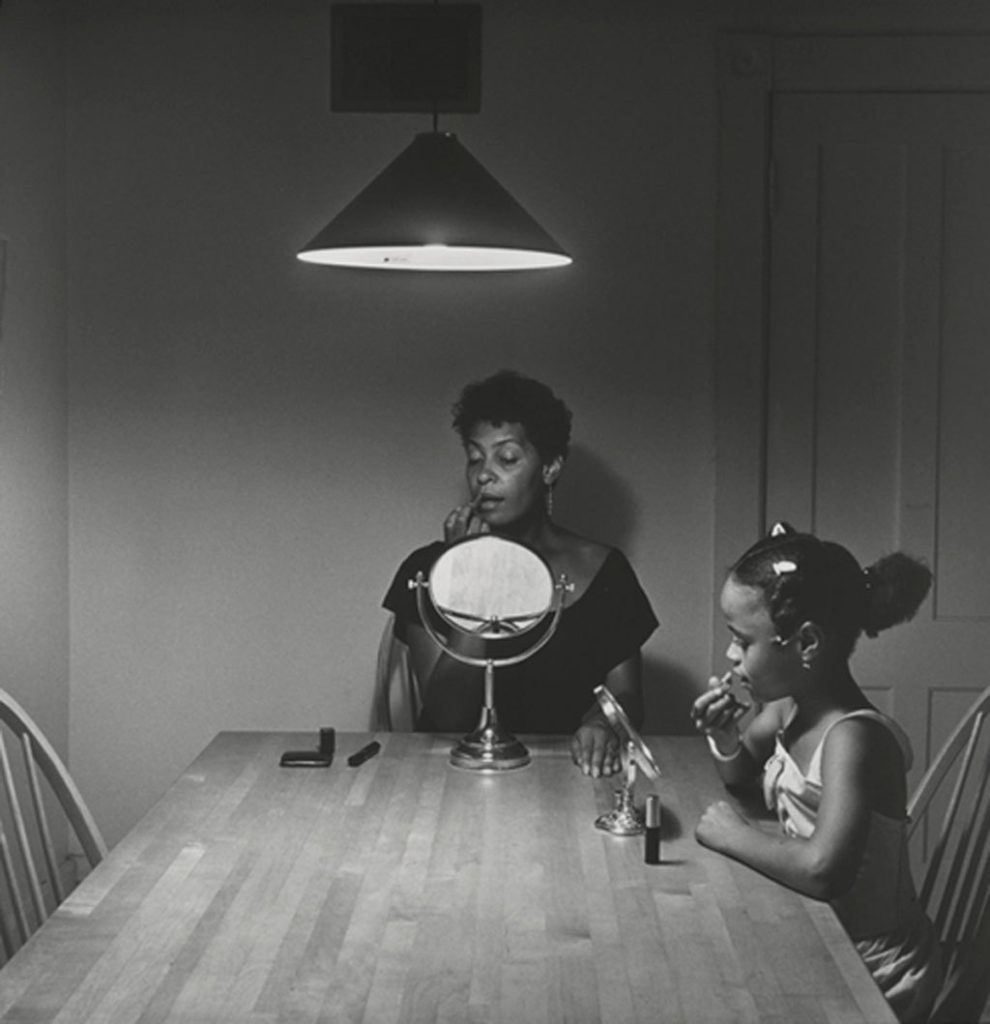
Carrie Mae Weems, Untitled (Woman and daughter with makeup) from Kitchen Table Series , (1990). Courtesy of Deborah Roberts.
Seven years later, the gallery moved again to Broome Street, where it faced several major crises: The ongoing onslaught of AIDS, the stock market crash and 9/11. Further uptown, Chelsea was becoming a gallery district, led by dealers like Pat Hearn and Barbara Gladstone, and in 2002, PPOW made the move there too.
Its veteran artists are now canonized, but it took decades until Olsoff and Pilkington felt like they caught the mainstream art world’s attention—from art fairs, museums, and the press. “We’ve always felt slightly like we’re climbing up a hill,” Olsoff said. “People weren’t recognizing all these other artists we were showing as that important. What changed, I think, is that they eventually saw the really influential work we did.”
Collector Dan Berger runs the Chicago gallery Iceberg Projects, which promotes artists of color and queer artists, with an emphasis on work that engages with the HIV/AIDS epidemic. He began buying from PPOW about a decade ago and now has works by several artists it represents, including Hunter Reynolds, Carlos Motta and Chiffon Thomas. His ongoing support stems from the gallery’s “strong sense of purpose,” he said.
“I look at them as being an activist-type gallery, and their activism actually shimmers in a river of muddy waters when many galleries lack purpose other than their manifestation of economic capitalism,” Berger said. “They are very fierce in terms of their championing of the work of artists with difficult politics. Wendy and Penny do not follow fads. I think that’s the definition of integrity.”
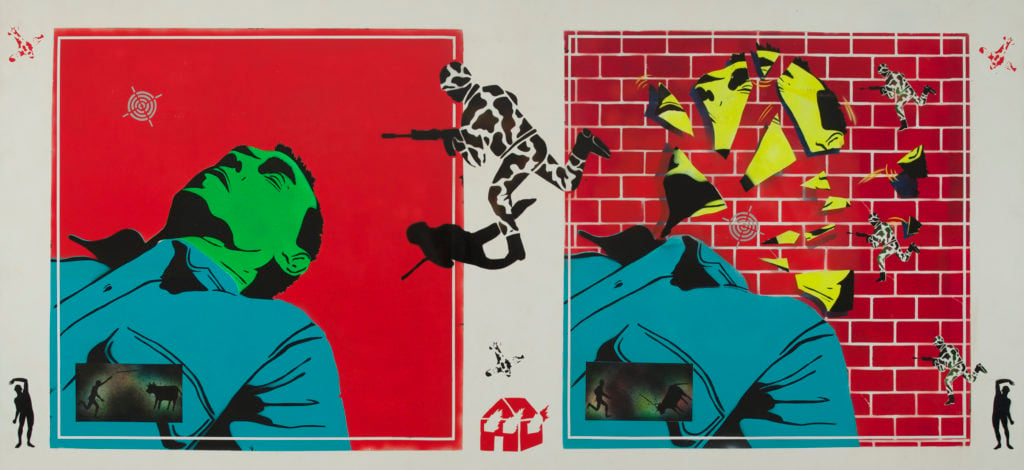
David Wojnarowicz’s Untitled (Green Head) (1982). Image courtesy of the Estate of David Wojnarowicz and PPOW, New York.
Today, the dealers feel like they’ve entered a different chapter—“a renaissance of sorts,” Pilkington said—in part because of their latest move but also due to the pandemic, which reignited past traumas. While they feel like life has approached some level of normalcy, they remain wary of issues like the monkeypox outbreak and global inflation.
“Penny and I are triggered quite easily because we’ve struggled through so many years,” Olsoff said. “We have to keep ourselves in check and realize we’re more established now, and not as fragile. But of course, we’re nervous.”
The duo is also responsible for a larger staff than ever—mostly employees in their 20s and early 30s. Among them is Eden Deering, Olsoff’s daughter, who recently became the gallery’s co-director.
“We can’t do everything. We’re almost 66 years old,” Olsoff said. “On the micro level, we’re giving up a little curatorial, loosening up a bit of our control, and having this great team we can train in the way we work.”
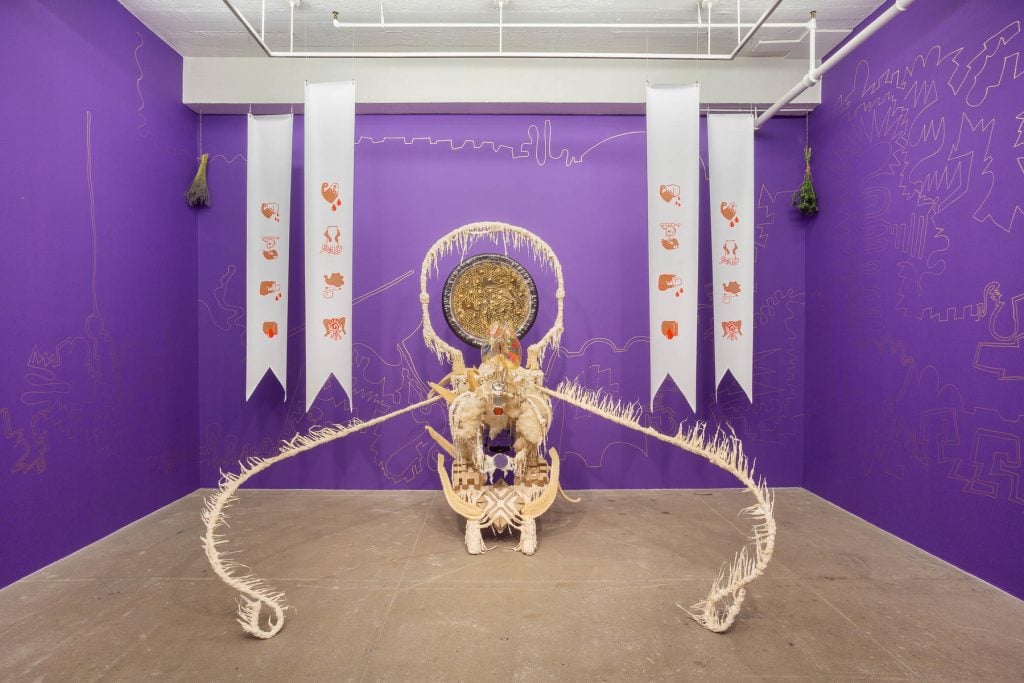
Guadalupe Maravilla, Installation View, Courtesy of PPOW Gallery
Part of that work means being sensitive to each artist’s agenda, she explained, especially amid current conversations about diversity, equity and inclusion. “For Guadalupe Maravilla, we are extremely attentive to how the press characterizes his story and language. We have another artist who has restrictions on who we sell to.”
“We’ve been trained by really fierce people like Carrie Mae Weems and David Wojnarowicz about care and representation,” she added. “From a minor article to a museum retrospective, everything is transparent.”
That assurance can make all the difference to artists like Terrazas, a relative newcomer to the New York art world. “It can be a scary place, especially for a young artist who doesn’t come from money and doesn’t have a fine arts degree nor established connections at institutions,” Terrazas said. “I also had (and still have) reservations around the excessive wealth that permeates the art world, but I’m excited to work with a team that encourages me to explore my own practice without fear of producing ‘unsellable’ art.”
“I know their expansion is not for the sake of building an art empire,” Terrazas added, “but to have more space to host pertinent conversations and opportunities for their younger artists.”